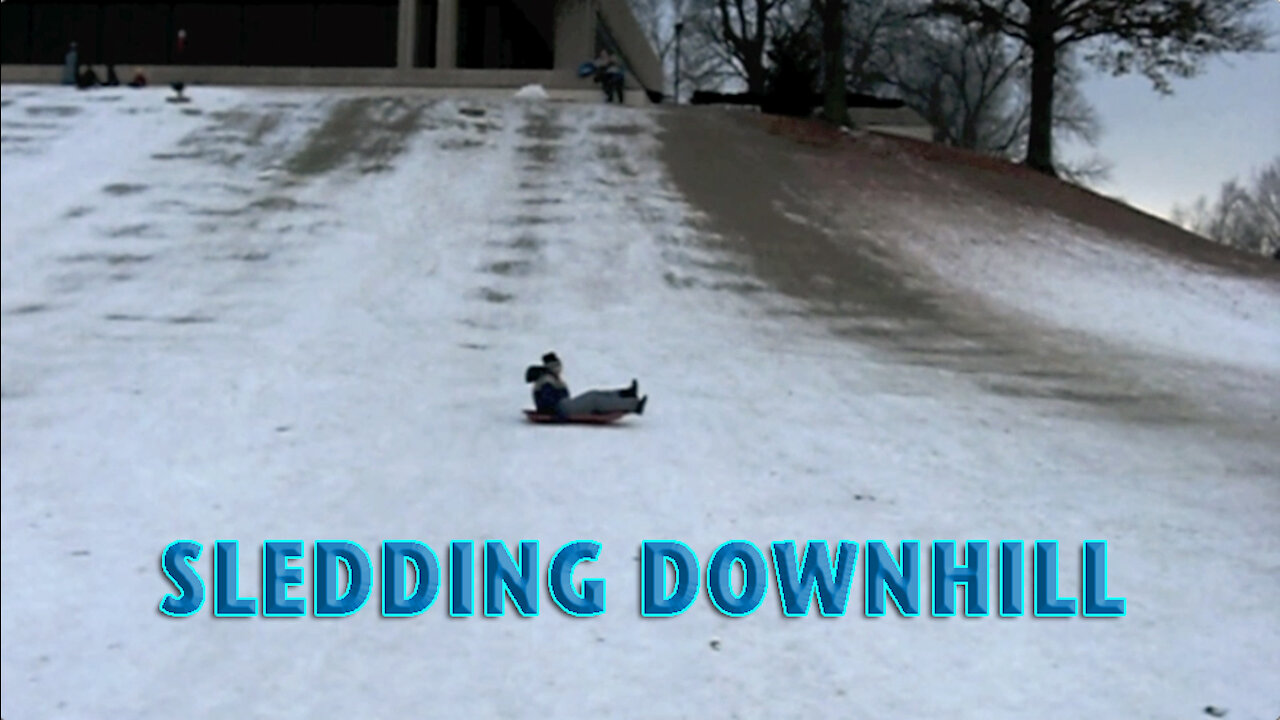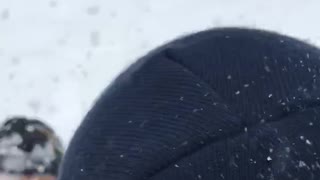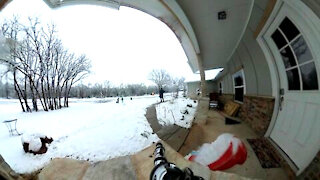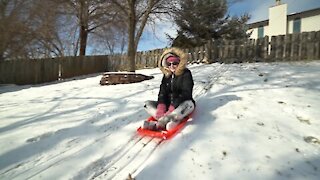Premium Only Content

Sledding Downhill
Preston slides down the snowy hill on his sled in Overland Park, Kansas.
Please comment, like and subscribe!
History of sledding:
The practical use of sleds is ancient and widespread. They were developed in areas with consistent winter snow cover, as vehicles to transport materials and/or people, far more efficiently than wheeled vehicles could in icy and snowy conditions. Early designs included hand-pulled sizes as well as larger dog, horse, or ox drawn versions. Early examples of sleds and sledges were found in the Oseberg Viking ship excavation.[1] The Toboggan sled is also a traditional form of transport used by the Innu and Cree of northern Canada and the people of Ancient Egypt are thought to have used sledges (on the desert sand and on ramps) extensively for construction.
The generic term sledding refers to traveling down a snowy hill using a sled such as a Flexible Flyer with wooden slats and metal runners. It is usually done during the winter when there is snow.[2] Flat plastic or aluminum discs and improvised sleds (carrier bags, baking trays, cafeteria trays, sheets of cardboard, etc.) may also be used. The activity has been known to exist as a fringe recreational activity far into the distant murky past in toboggan-type sleds which seasonally supplant the ubiquitous cart.
Back country sledding
A backcountry sled (a kid's size Mad River Rocket - Stinger)
In contrast to the more common forms of sledding, back country sledding involves four important elements in combination: a great amount of directional control, flotation, a binding system, and padding. First, back country sleds are made of strong plastic material, with the snow-side surface possessing various grooves and chines for directional control. Second, the plastic construction, with a large amount of snow-side surface area keeps the sled afloat in deeper snow conditions (the same principle behind wider powder skis or snowboards). Though the original runner sleds possessed directional control, their thin runner blades bogged down in anything but icy or thin snow conditions. Disk sleds, on the other hand, possessed flotation but no directional control. Third, modern back country sleds have a binding system, which usually consists of a simple belt strap that attaches to the sides of the sled. With the sledder in the kneeling position, the strap may go over the sledder's thighs or calves before connecting with the strap from the other side of the sled with some sort of buckling device. Finally, back country sleds have foam pads glued for the sledder to kneel on for shock absorption. One such sled is the Mad River Rocket.
Back country sledding is a closer kin to back country alpine skiing or snowboarding than to traditional "pile the family in the van and go to the local hill" type of sledding. The terrain for back country sledding includes powder-filled steeps, open mountain bowls, cliff-filled ridges, and basically anywhere that one finds the powder, steeps, rocks and trees. Back country sleds, with the binding system and padding, may also be used for freestyle moves such as spins and flips off jumps and rail slides. Though similarities exist between back country sledding and alpine skiing/snowboarding, important differences separate the disciplines. From a technical perspective, the lack of a metal edge and the lower center of gravity make it more difficult to control a back country sled on icy or packed snow surfaces. From an access perspective, alpine resorts do not allow sledding on the actual mountain, except for the occasional small tubing hill.
-
 3:00
3:00
AFV
4 years agoSledding
1.12K -
 0:09
0:09
Jmg64
4 years agoSledding accident...
86 -
 1:36
1:36
TitusHelzerman
4 years ago $0.05 earnedSledding at -10
217 -
 1:02
1:02
thefluffydogvlog
4 years ago $0.01 earnedPomeranian Goes Sledding
65 -
 0:12
0:12
Kid Stuff Channel for Kids Videos!
4 years ago $0.01 earnedBackyard Sledding Fun!
259 -
 0:24
0:24
Art Beauty Photography & Videography
4 years agoSnow Sledding Time Lapse
4061 -
 0:09
0:09
SDelaney
4 years agoAlly's Sledding Wipe Out
33 -
 1:38
1:38
Abryant907
4 years agoSledding in the snow❄
114 -
 6:35
6:35
Pastor Jimmy Proulx
4 years agoLaundry Basket Sledding
48 -
 0:17
0:17
Kid Stuff Channel for Kids Videos!
4 years ago $0.02 earnedBackyard Sledding Slow Motion
440